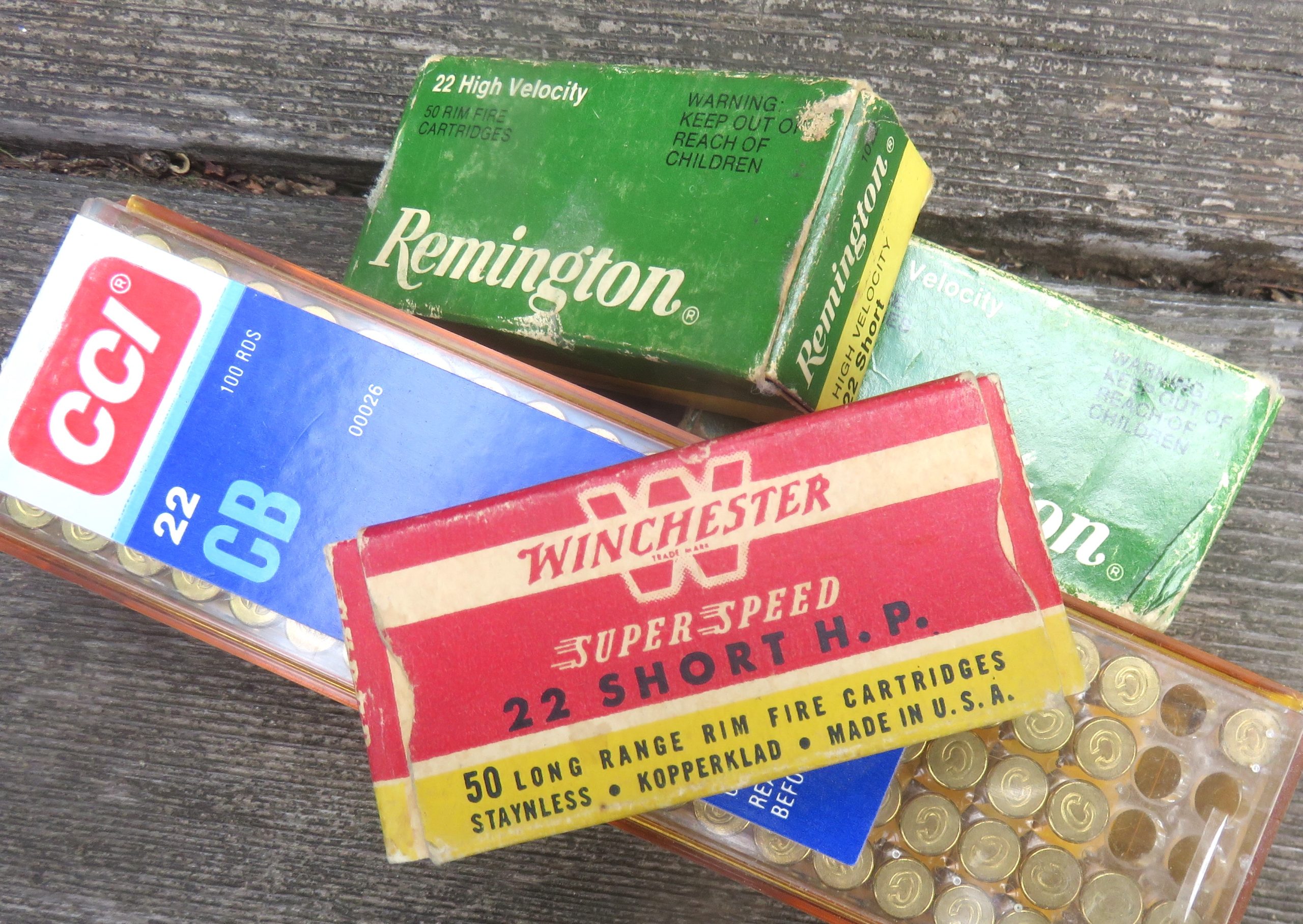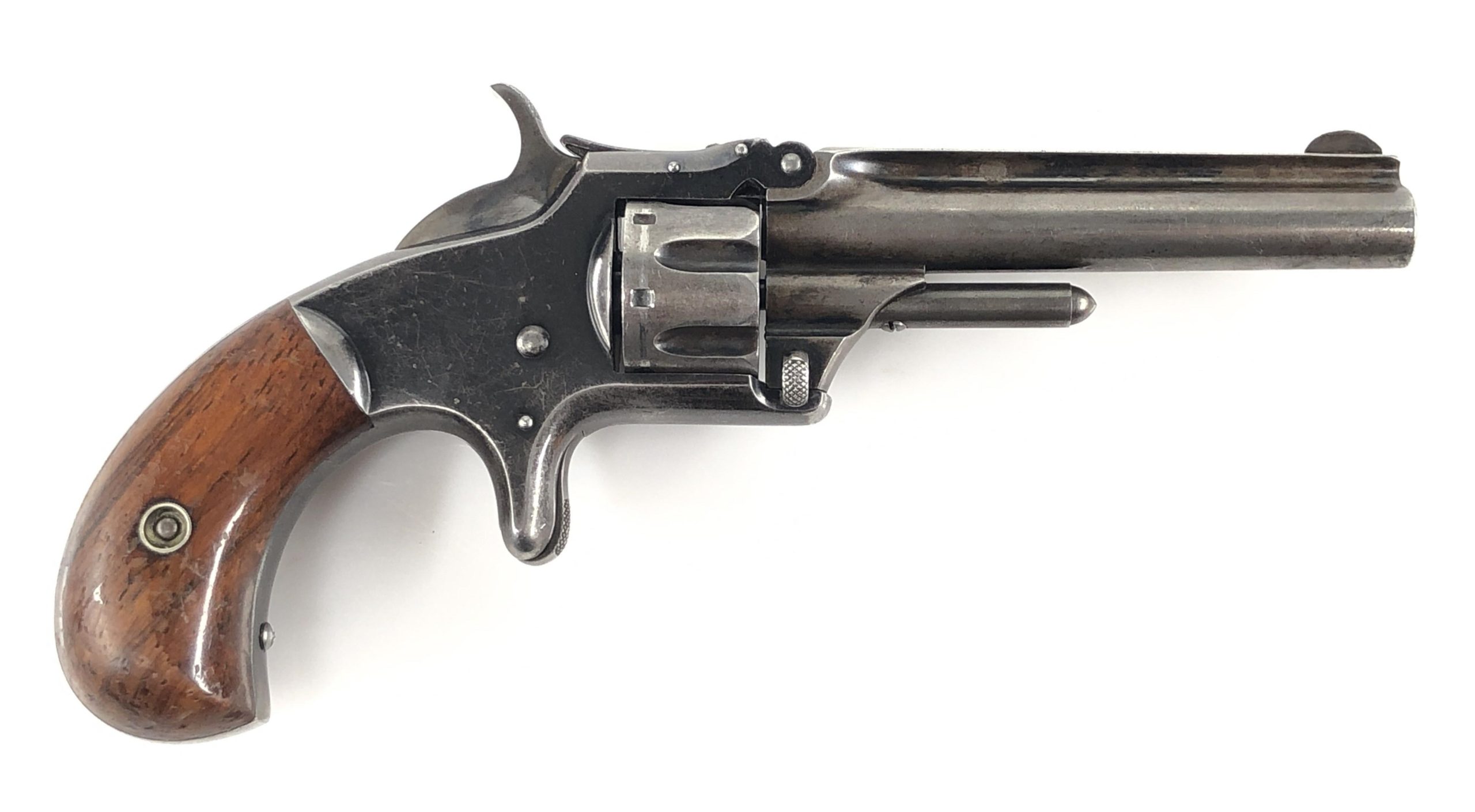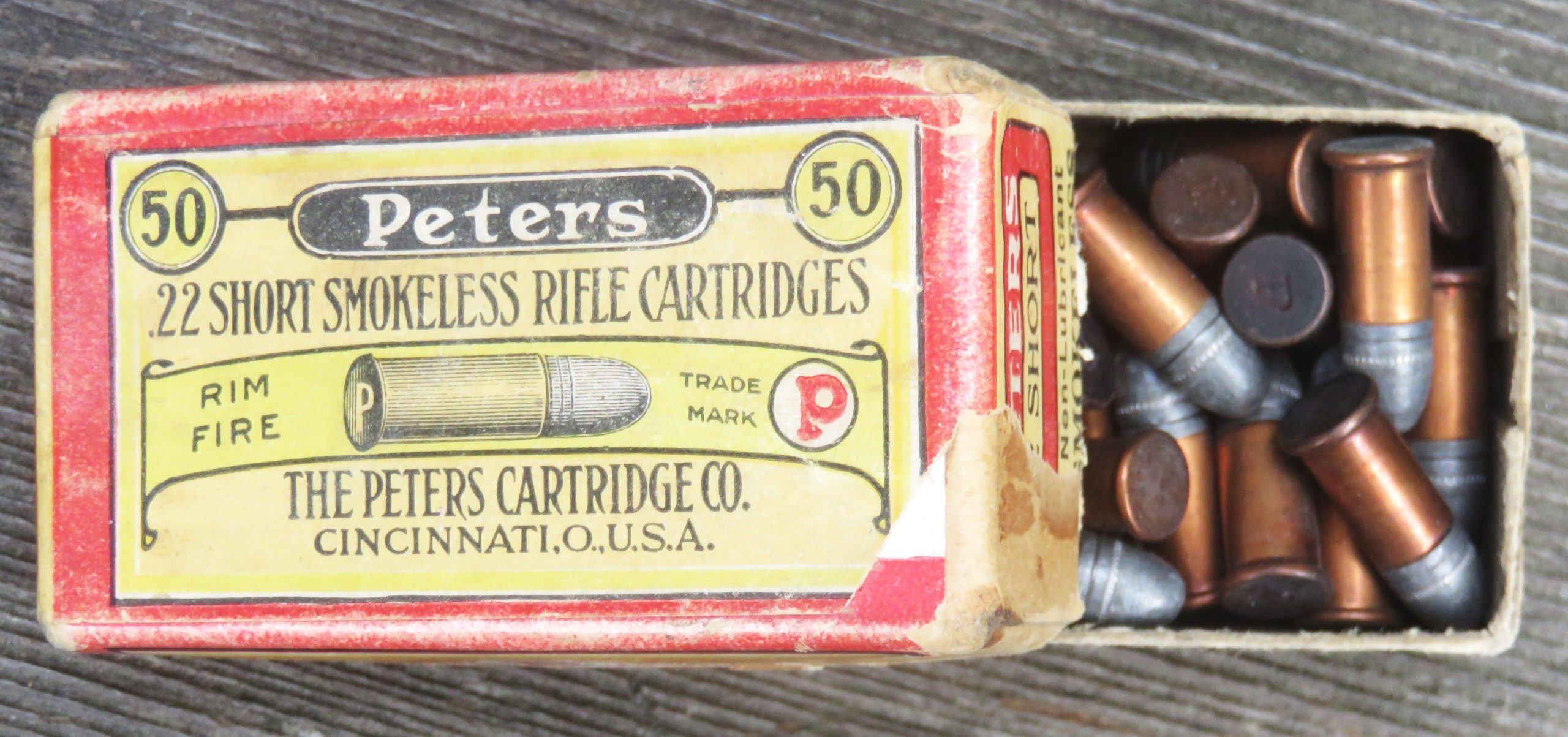
By Mike Nesbitt | Contributing Editor
The .22 Short, our oldest self-contained metallic cartridge, black powder or otherwise, has been with us for almost 170 years, and it is still alive and kicking.
Of course, over that span of time several changes have been made. Those changes were made in bullet weight and alloy, in the types of powder as well as the amount of the powder charge, and the cartridge’s cases were changed from their original copper to the brass alloy that is currently used. However, none of those changes or updates did very much to change this little cartridge’s general appearance.
As the years rolled by, the .22 Short has seen many brothers and cousins introduced to the shooting scene. Some of those are still with us while the greater majority of them have fallen into the dust, only remembered by cartridge collectors. Some of those cousins were also very historical such as the .44 Henry and the .56-.56 Spencer and its slightly smaller-bored brothers. Of course, we can’t forget that the .22 Long Rifle is a direct descendent, from about 1888, and the modern rimfire magnums are also related.

In this fairly short visit with our oldest cartridge, there will be some discussion about loads because almost every cartridge manufacturer has produced it. Of course, there will be no mention of handloads. While some advances in reloading rimfire ammunition have been made in recent years, I have no experience in that field, so it will be left alone. Today our oldest cartridge receives very little fanfare even though I believe it should get more recognition.
When the .22 Short was introduced in 1857, just being called the .22 at that time, it helped usher in a whole new concept in shooting. The gun for this little cartridge was the first revolver to use Rollin White’s idea of the bored-through cylinder with cartridges loaded from the back. That revolver was put on the market by the at-that-time young gun company, Smith & Wesson. The demand for this little revolver was rather immediate and it cleared the path for larger rimfire pistols as well as rifles which were introduced just a short time later. The name “Short” was not used until its closest sibling, the .22 Long, was introduced.

And please don’t think that the .22 Short hasn’t earned its place in the hall of fame for shots well placed in the time of need. This can include war stories because we can easily guess that soldiers on both sides of our Civil War would have been eager to put one of the little .22 revolvers in their pockets as a back-up gun, one more ace in the hole so to speak. Hunting tales and stories of the battle against the wilderness also seem light in recording the accomplishments of the .22 Short but they were certainly there. The .22 Shorts, in both rifles and revolvers, were used by men and women who had to make every shot, and every penny, count.
Several years ago, I read a story about a trapper, possibly in Alaska or the Yukon, who travelled his trapline on foot with just one dog which was used as a pack dog. He had been to the trading post to get supplies and was on his way back to his cabin when he and the dog crossed paths with a grizzly bear. The bear objected to this man and his dog using the same trail. The trapper’s only gun was a single-shot rifle in .22 caliber and the only ammo he had for it were some .22 Short cartridges. His dog kept the bear busy just long enough for the trapper to put one of the rather tiny, probably 29 grains in weight, bullets through the thin part of the bear’s skull, to settle the accounts of trail right-of-way.
A lucky shot? Not really. The story gave details about how the trapper could have left his dog to the bear and could have possibly gotten away. But when your only friend is trying to save your life, it’s only courteous to stick around and the trapper had to shoot the bear perhaps six times before finding that thin spot in the bone. Under-gunned? Yes, certainly, but it did the job in a pinch.
At least just as many years ago, my grandfather was a market hunter. He was also a hunter for logging camps, back in the days when loggers lived in the camps during the week. On payday night, when they could take the train into town, they’d see who could spend his week’s pay the quickest.
One day Grampa and I were out wandering around and we saw a couple of deer. We weren’t hunting, although I’m sure there was a rifle with us because Grampa always seemed to love letting me shoot his Remington Model 14 carbine in .30 Remington. (Later, he gave that rifle to me.) Seeing those deer triggered him into telling me about the old days and in this case, he told me about the time when he hunted deer for the market.
I asked him what a “good day’s work” was and he told me that three deer made a good day. He wouldn’t always be that lucky, of course, but three deer in a day was good profit. My next question was if he used the old .30 Remington for his hunting. “Oh no!” he replied. Using the .30 Remington was too expensive, ammunition wise, and besides that, it wasn’t needed. Most of the deer he got were young ones, deer that he could get very close to. For collecting those deer, he used a Stevens single shot .22 pistol and the ammo he used was .22 Shorts. Times have changed and market hunting is no longer legal, thank goodness, but several professional butchers still use the .22 Short in ways similar to the close shots taken by my grandfather.
Coming back to the present, within the .22 Short’s limitations, today’s uses for this cartridge can be quite varied. For starters, it is one of the very best for teaching beginners because of its low noise level along with its general lack of recoil. Along with those inviting characteristics, it is very accurate. Ammunition is made for the Short in enough different loads that the shooters can select which load would do the best for them, much like the golfer who picks the proper club for the next shot.

Starting at the bottom of the velocity scale in the .22 Short “golf bag” of loads is the .22 CB cap The “good ol’ Boys” at CCI fairly well proved they were the .22 shooter’s best friend several years ago when they brought back the CB Cap and put it on the market. This almost silent round sends the 29-grain bullet out at 727 feet per second from a six-inch pistol test barrel. Such velocity is not the most impressive part of this load at all. And, C.C.I. also offers the .22 CB Cap in the .22 Long case, which I have never used. Since C.C.I.’s CB Caps proved to be popular, other companies have also offered these low velocity loads.
Stepping up on the velocity just a little bit, we find another loading from CCI. This is their .22 Short Target Load which produces 830 fps out of an 18 ½-inch barrel and 786 fps from a 6-inch barrel. This load was designed to be used in autoloading target pistols chambered for the .22 Short. It’s a good bit slower than the standard .22 Short load, using the same 29-grain bullet and it is only slightly louder when fired than the .22 CB Cap. Actually, I don’t see this load listed anymore and I’m glad I still have some.

Another .22 Short loading that is getting difficult to find is the standard velocity loading.
Winchester offers a .22 Short loading which fires the 29-grain bullet at 1,055 fps which is just 10 fps faster than the old standard load by Remington from 30 years ago. This should be a very popular loading and let’s hope that it stays on the market.
This brings us to the high velocity loadings for the .22 Short, we’ve simply saved the fastest for the last. Velocity listings from different ammunition companies show little variation and in practical use those small differences will never be noticed. The generally published speeds for the high velocity loads are 1,164 fps for the 27-grain hollow points and 1,132 fps for the 29-grain solid points.
To my way of thinking, the .22 Short hollow point loads are the best if you intend to hunt with this little round. It’s the fastest of the bunch and it’s basically the only one that can be depended on to offer some expansion with the hit. My personal experience with the .22 Short hollow points is confined to the grouse and rabbits I used to get with this little gun and in that area it really shines. In fact, I’ve argued that the .22 Short is better on small game than the .22 Long Rifle.

My reasoning for suggesting this is because grouse and rabbits are both relatively small yet hardy animals. When hit with a bullet from the .22 Long Rifle, the bullets seem to zip right on through without stopping or expending much of their energy. A bullet from the .22 Short might not stop within the animal either but I do believe, based on field experience, that the lighter bullet from the Short will transfer more energy to the target than the heavier bullet from the .22 Long Rifle. This is certainly a poor subject to argue about but at the same time, the .22 Short is a very practical cartridge for small game hunting.
Today’s popularity of the .22 Short is certainly on the decline. Most .22 rifles made for the market today are autoloaders for the .22 Long Rifle cartridge, which won’t function with any other ammunition. This is something I personally do not favor and, in my opinion, a .22 single shot is a much better rifle for all around use, especially for training. But that probably only exposes my old-fashioned ways, as well as how much I do like this little caliber, our very first self-contained metallic cartridge, which had an original loading of just 3 grains of black powder under a 30-grain bullet.



